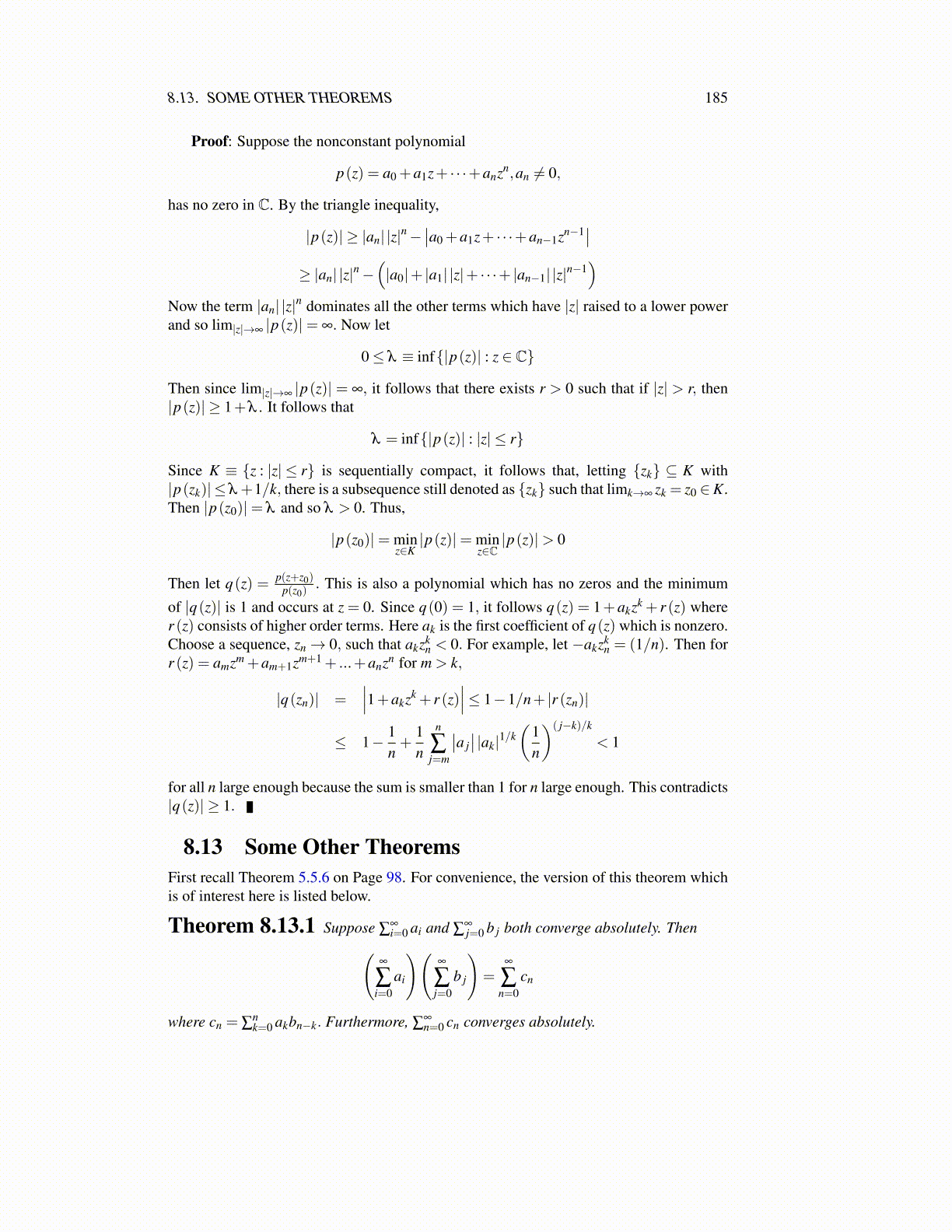
8.13. SOME OTHER THEOREMS 185
Proof: Since |x−a|< r, the series, ∑∞n=0 an (x−a)n , converges absolutely. Therefore,
the above theorem applies and(∞
∑n=0
an (x−a)n
)p
=∞
∑n=0
(∑
k1+···+kp=nak1 (x−a)k1 · · ·akp (x−a)kp
)
=∞
∑n=0
(∑
k1+···+kp=nak1 · · ·akp
)(x−a)n .
With this theorem it is possible to consider the question raised in Example 8.10.3 onPage 178 about the existence of the power series for tanx. This question is clearly includedin the more general question of when (∑∞
n=0 an (x−a)n)−1 has a power series.
Lemma 8.13.5 Let f (x) = ∑∞n=0 an (x−a)n, a power series having radius of conver-
gence r > 0. Suppose also that f (a) = 1. Then there exists r1 > 0 and {bn} such that forall |x−a|< r1,
1f (x)
=∞
∑n=0
bn (x−a)n .
Proof: By continuity, there exists r1 > 0 such that if |x−a|< r1, then
∞
∑n=1|an| |x−a|n < 1.
Now pick such an x. Then
1f (x)
=1
1+∑∞n=1 an (x−a)n =
11+∑
∞n=0 cn (x−a)n
where cn = an if n > 0 and c0 = 0. Then∣∣∣∣∣ ∞
∑n=1
an (x−a)n
∣∣∣∣∣≤ ∞
∑n=1|an| |x−a|n < 1 (8.32)
and so from the formula for the sum of a geometric series,
1f (x)
=∞
∑p=0
(−
∞
∑n=0
cn (x−a)n
)p
.
By Corollary 8.13.4, this equals
∞
∑p=0
∞
∑n=0
bnp (x−a)n (8.33)
where bnp = ∑k1+···+kp=n (−1)p ck1 · · ·ckp . Thus∣∣bnp
∣∣ ≤ ∑k1+···+kp=n∣∣ck1
∣∣ · · · ∣∣ckp
∣∣ ≡ Bnpand so by Theorem 8.13.3,
∞
∑p=0
∞
∑n=0
∣∣bnp∣∣ |x−a|n ≤
∞
∑p=0
∞
∑n=0
Bnp |x−a|n =∞
∑p=0
(∞
∑n=0|cn| |x−a|n
)p
< ∞